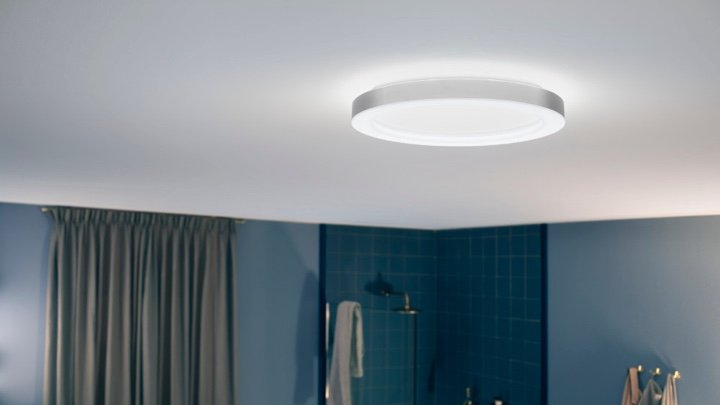Ceiling lights are a fundamental aspect of interior design, serving both functional and aesthetic purposes. They play a pivotal role in illuminating spaces, setting the mood, and defining the overall ambiance of a room. This article provides an in-depth analysis of ceiling lights, exploring their design variations, technological advancements, impact on interior spaces, market trends, and future outlook.

I. Types and Design of Ceiling Lights
Ceiling lights come in a myriad of designs, each offering unique characteristics and applications:
Recessed Lights: These lights are installed into the ceiling, creating a sleek and unobtrusive look. They are versatile and can be used in various settings.
Flush Mount Lights: Ideal for low ceilings, flush mount lights sit flush against the ceiling, providing general illumination without taking up space.
Pendant Lights: Suspended from the ceiling, pendants offer both ambient and task lighting. They come in various shapes, sizes, and styles.
Chandeliers: Often ornate and decorative, chandeliers are statement pieces that can transform a room with their grandeur.
Track Lighting: This type of lighting system allows for adjustable light direction, making it ideal for highlighting specific areas or objects.
II. Technological Innovations
The lighting industry has witnessed significant technological advancements, particularly in ceiling lights:
LED Technology: LED lights have revolutionized ceiling lighting with their energy efficiency, long lifespan, and ability to emit light in various colors and temperatures.
Smart Lighting: The integration of ceiling lights with smart home systems allows for remote control, dimming, and scheduling through smartphones or voice commands.
Eco-Friendly Materials: Manufacturers are increasingly using sustainable materials in the production of ceiling lights, reducing the environmental impact.
III. Functional Benefits of Ceiling Lights
Ceiling lights serve several functional purposes that enhance the usability of a space:
General Illumination: Ceiling lights provide the primary source of light in a room, ensuring adequate visibility for everyday activities.
Task Lighting: Certain ceiling lights, like track or pendant lights, can be directed to provide focused light for specific tasks such as reading or cooking.
Mood Setting: The type and intensity of ceiling lights can influence the mood and atmosphere of a room, from warm and inviting to bright and energetic.
IV. Aesthetic Impact
Ceiling lights contribute significantly to the aesthetic appeal of an interior space:
Focal Point: A well-chosen ceiling light can serve as a focal point, drawing attention and adding a touch of elegance or modernity to a room.
Design Harmony: The design of the ceiling light should complement the overall interior design theme, including the style, color scheme, and materials used.
Scale and Proportion: The size and scale of the ceiling light must be appropriate for the room to avoid overwhelming or underwhelming the space.
V. Market Trends
The market for ceiling lights is influenced by several trends:
Minimalism: Simplistic and clean designs are in demand, reflecting the minimalist trend in interior design.
Industrial Chic: The industrial design aesthetic has led to an increased popularity of exposed bulbs and metallic finishes in ceiling lights.
Customization: Consumers are seeking ceiling lights that can be customized to their specific needs and preferences, including size, material, and color.
Energy Efficiency: There is a growing preference for energy-saving ceiling lights, driven by environmental awareness and cost considerations.
VI. Factors to Consider in Ceiling Light Selection
Choosing the right ceiling light involves considering the following factors:
Room Size and Ceiling Height: The dimensions of the room and the height of the ceiling will determine the appropriate type and size of the ceiling light.
Purpose of the Room: The function of the room will influence the type of lighting needed, whether it’s for general illumination, task lighting, or mood setting.
Budget: The cost of the ceiling light, including installation and potential energy savings, is an important consideration for most consumers.
Maintenance: The maintenance requirements of different types of ceiling lights should be taken into account, especially in terms of bulb replacement and cleaning.
VII. Future Prospects
The future of ceiling lights is shaped by ongoing innovations and changing consumer demands:
Smart Integration: The continued growth of smart home technology is likely to make smart ceiling lights more prevalent.
Energy Efficiency: Advances in LED technology will further improve the efficiency and lifespan of ceiling lights.
Design Innovation: The design of ceiling lights is expected to evolve, with an emphasis on sustainability and user customization.
Conclusion
Ceiling lights are a critical element in interior design, providing both illumination and aesthetic enhancement. As technology advances and consumer preferences evolve, the role of ceiling lights is set to become even more diverse and sophisticated. Designers and manufacturers must continue to innovate and adapt to these changes, ensuring that ceiling lights meet the functional needs and design aspirations of modern living spaces.
